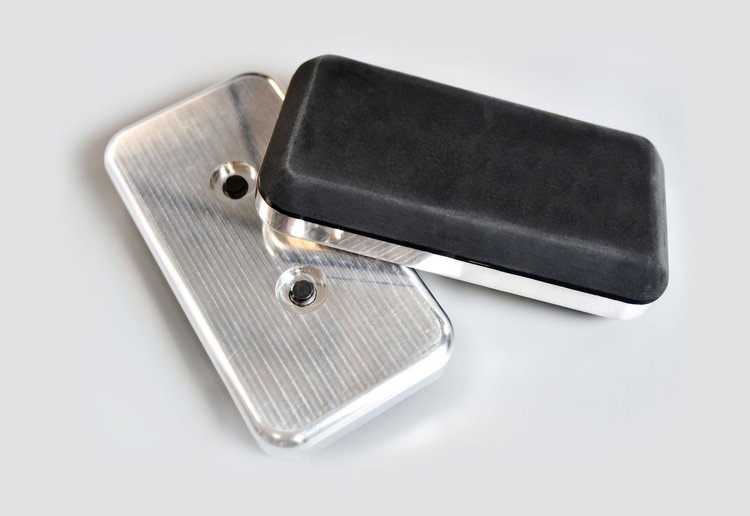Chromatic 3D Materials, an additive manufacturing (AM) company based in Minneapolis, has announced the launch of two new products for reactive extrusion AM. In addition to ChromaScan, a software platform that allows users to print directly onto non-planar objects with resin, Chromatic 3D also just released RX-Flow, a line of machines for reactive extrusion AM with thermoset elastomers.
The RX-Flow, which so far comes in two different sizes, is intended for low-volume production and R&D, and as such costs — according to the company — just 25 percent of the typical cost of an industrial printer. Since reactive extrusion printing is a relative newcomer to the AM sector, Chromatic 3D is deliberately attempting to open up a market with this product line. ChromaScan serves the same purpose, as it would seem impossible to introduce printing with resin onto other objects to engineers and manufacturers who have never done it before, without an accompanying software platform created expressly for that purpose.

Essentially, reactive extrusion means that the materials dry mostly in the print bed, with little or no post-processing necessary. Being able to accomplish this while also printing directly onto other objects should, after sufficient energy and time is devoted to figuring out the technology, yield countless new possibilities for the kinds of end-products that can be printed.
In a press release announcing the launch of ChromaScan, Dr. Cora Leibig, CEO of Chromatic 3D, commented, “Hyperbolic print paths are challenging for existing technologies. ChromaScan easily adapts a flat print path for printing on 3D surfaces.” In a press release about the launch of RX-Flow, Leibig commented, “There are many manufacturers who want to test drive 3D printing with thermoset engineering materials but find industrial 3D printers cost prohibitive. Our new line of R&D printers gives them a budget-friendly way to demonstrate proof of concept and take their first steps toward industrial-scale 3D printing with new technologies like reactive extrusion [AM].”

Along with new customers from other AM market segments, reactive extrusion could have a better chance than most other techniques, in catching on with customers who are entirely new to AM. A technique with little or no post-processing would presumably be more appealing to individuals who are unfamiliar to the technology, than comparable alternatives with intensive and complicated post-processing phases.
More broadly, if the AM market does indeed scale up significantly over the next few years, then it is a smart time to target the R&D market. As the sector scales up and evolves, what’s happening at the R&D level will scale up and evolve, as well: the more popular that AM becomes on an industrial scale, the greater the number of workers and/or students there will be who are entering the market without ever having used the technology. In that sense, the business model of making the technology more accessible to new users is likely to spawn a cottage industry of its own.
Images courtesy of Chromatic 3D Materials
Subscribe to Our Email Newsletter
Stay up-to-date on all the latest news from the 3D printing industry and receive information and offers from third party vendors.
You May Also Like
Precision at the Microscale: UK Researchers Advance Medical Devices with BMF’s 3D Printing Tech
University of Nottingham researchers are using Boston Micro Fabrication‘s (BMF) 3D printing technology to develop medical devices that improve compatibility with human tissue. Funded by a UK grant, this project...
3D Printing Webinar and Event Roundup: April 21, 2024
It’s another busy week of webinars and events, starting with Hannover Messe in Germany and continuing with Metalcasting Congress, Chinaplas, TechBlick’s Innovation Festival, and more. Stratasys continues its advanced training...
3D Printing Webinar and Event Roundup: March 17, 2024
It’s another busy week of webinars and events, including SALMED 2024 and AM Forum in Berlin. Stratasys continues its in-person training and is offering two webinars, ASTM is holding a...
3D Printed Micro Antenna is 15% Smaller and 6X Lighter
Horizon Microtechnologies has achieved success in creating a high-frequency D-Band horn antenna through micro 3D printing. However, this achievement did not rely solely on 3D printing; it involved a combination...





























